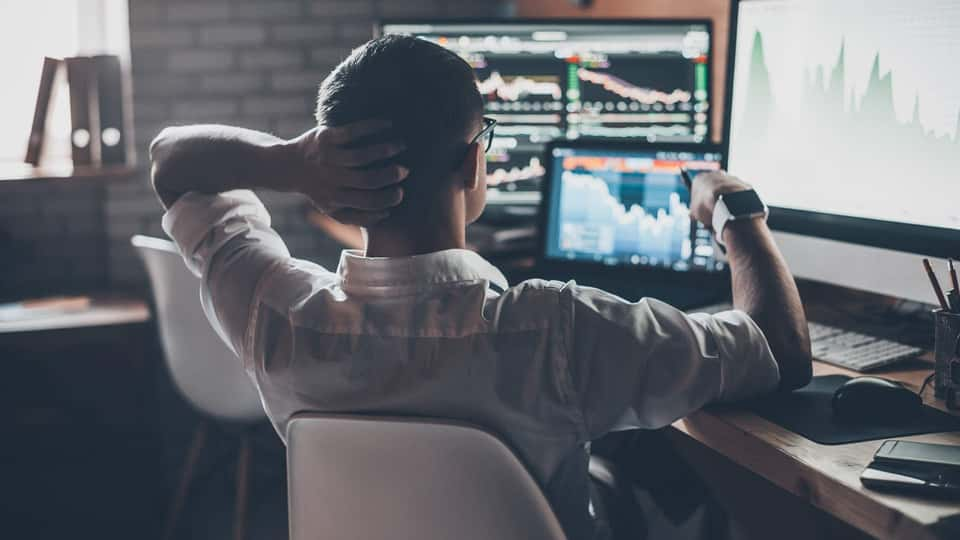If the decade following the 2008 financial crisis was often referred to as the ‘most hated rally’ of all time, the past month has to be the mostbaffling bounce in history.
We’ve just suffered through a self-inflicted global shutdown, which according to this morning’s job data has left over 20.5 million jobless and an unemployment rate of 14.7% — both records — and especially stunning when considering this all occurred in just a six-week span.
Yet here during the largest real economic shock in modern history, and the “SPDR 500 (SPY - Get Rating)” is off just 11.2% this year. The “Invesco NASDAQ 100 (QQQ) in which dominated mega-cap tech names like “Amazon (AMZN)“”MicrosoftMSFT)” and “Netflix (NFLX)” is actually up for the year and down just 1.8% from all-time highs.
So, here I attempt to answer “what’s up with the stock market?” in no particular order:
1. The Federal Reserve has intervened in a massive way in credit markets to forestall a run on the corporate sector. This hasn’t prevented every bankruptcy (far from it), but the aggressive action, and the implication that it could do more. Once the Fed announced it would buy everything from corporate to municipal bonds to even high yield ETFs like“Bloomberg High Yield Bond (JNK)” removes some tail risk from the system.
2. Fiscal policy has been in some sense impressive. In a note, that came out Sunday evening, “Goldman Sachs (GS)” top economist Jan Hatzius wrote that “disposable personal income is likely to register slightly positive growth for this year” because of the unemployment insurance expansion has been so robust. With unemployment going into the teens, Hatzius believes that the government will ply workers with enough support to actually grow disposable personal income.
3. Tech. Note the stats above about the SPY and the QQQ. It just so happens that this peculiar crisis has not been particularly disruptive to big tech companies, and in some cases, their models are absolutely booming (like Amazon). And of course, big tech companies already accounted for a huge share of S&P market cap going into the crisis. If you look at other sectors (energy, airlines, hotels, real estate etc.) the carnage is way deeper, with returns in some cases worse than -60%.
4. Ironically, some of the lowest-paid workers are the most essential. Garbage collectors, janitors, grocery store clerks, food delivery, truck drivers, farmers, daycare providers – with few exceptions (doctors) the jobs that are most vital during a pandemic are ones that got little respect before it.
Yet, while many ‘essential’ workers continue to perform their jobs, there are multitudes in the service industry, such as travel, restaurant, and leisure who sit at home with no income. But from Wall Street’s point of view, those paying jobs will have a smaller negative economic impact than if C-suite white-collar workers suddenly found themselves without their six and seven-figure income.
5. But what many be overlooking is most businesses operate on razor-thin margins. Financial advisors recommend people have a six-month emergency fund. But many businesses faced bankruptcy after losing a few weeks of sales. This is less about poor preparation and more about revealing the tightrope walk of business operations and can have a domino effect that takes down all but the largest of companies.
The two most important economic stories are the size of the business collapse and the magnitude of the stimulus. It’s easy to focus on the former because it’s personal and devastating, while ignoring the former because it’s political and hard to contextualize. They are equally huge but despite 15% unemployment, as the GS analyst Hatzius predicts overall household income will be higher in Q2 2020 than it was in Q2 2019, because of the disparity in which jobs have been lost and the magnitude of monetary stimulus.
No business model or investment strategy is proven until it survives a calamity. Even then, nothing is guaranteed. But, I think we’re learning that size, in terms of a balance sheet, that penetration of the market especially in the digital and mobile landscape, matters.
And are that front AMZN, MSFT, and “Apple (APPL)” look set not just to survive, but thrive.
Want More Great Investing Ideas?
9 “BUY THE DIP” Growth Stocks for 2020
REVISED 2020 Stock Market Outlook– Discover why there is more downside ahead and the Top 10 picks for the bear market.
9 Simple Strategies to REGROW Your Portfolio – Learn the 9 strategies employed by Steve Reitmeister to generate consistent outperformance…even during bear markets.
SPY shares were trading at $291.50 per share on Friday afternoon, up $3.82 (+1.33%). Year-to-date, SPY has declined -8.90%, versus a % rise in the benchmark S&P 500 index during the same period.
About the Author: Option Sensei

Steve has more than 30 years of investment experience with an expertise in options trading. He’s written for TheStreet.com, Minyanville and currently for Option Sensei. Learn more about Steve’s background, along with links to his most recent articles. More...
More Resources for the Stocks in this Article
| Ticker | POWR Rating | Industry Rank | Rank in Industry |
| SPY | Get Rating | Get Rating | Get Rating |
| Get Rating | Get Rating | Get Rating |






